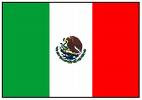Friday, November 18, 2011
WHO INVENTED THE HEATER
Willis Haviland Carrier (November 26, 1876 – October 7, 1950) was an American engineer and inventor, and is known as the man who invented modern air conditioning.
In Buffalo, New York, on July 17, 1902, in response to a quality problem experienced at the Sackett-Wilhelms Lithographing & Publishing Company of Brooklyn, Willis Carrier submitted drawings for what became recognized as the world's first modern air conditioning system. The 1902 installation marked the birth of air conditioning because of the addition of humidity control, which led to the recognition by authorities in the field that air conditioning must perform four basic functions: 1.) control temperature; 2.) control humidity; 3.) control air circulation and ventilation; 4.) cleanse the air.
After several more years of refinement and field testing, on January 2, 1906, Carrier was granted U.S. patent No. 808897 on his invention, which he called an "Apparatus for Treating Air," the world's first spray-type air conditioning equipment. It was designed to humidify or dehumidify air, heating water for the first and cooling it for the second.
In 1906, Carrier discovered that "constant dew-point depression provided practically constant relative humidity," which later became known among air conditioning engineers as the "law of constant dew-point depression." On this discovery he based the design of an automatic control system, for which he filed a patent claim on May 17, 1907. The patent, No. 1,085,971, was issued on February 3, 1914.
On December 3, 1911, Carrier presented the most significant and epochal document ever prepared on air conditioning – his "Rational Psychrometric Formulae" – at the annual meeting of the American Society of Mechanical Engineers. It became known as the "Magna Carta of Psychrometrics." This document tied together the concepts of relative humidity, absolute humidity, and dew-point temperature, thus making it possible to design air-conditioning systems to precisely fit the requirements at hand.
With the onset of World War I in late-1914, the Buffalo Forge Company, for which Carrier had been employed 12 years, decided to confine its activities entirely to manufacturing. The result was that seven young engineers pooled together their life savings of $32,600 to form the Carrier Engineering Corporation in New York on June 26, 1915. The seven were Carrier, J. Irvine Lyle, Edward T. Murphy, L. Logan Lewis, Ernest T. Lyle, Alfred E. Stacey, Jr., and Edmund P. Heckel. The company eventually settled on Frelinghuysen Avenue in Newark, New Jersey.
Despite the development of the centrifugal refrigeration machine and the commercial growth of air conditioning to cool buildings in the 1920s, the company ran into financial difficulties, as did many others, as a result of the Wall Street Crash in October 1929. In 1930, Carrier Engineering Corp. merged with Brunswick-Kroeschell Company and York Heating & Ventilating Corporation to form the Carrier Corporation, with Willis Carrier named Chairman of the Board.
Spread out over four cities in New Jersey and Pennsylvania, Carrier consolidated and moved his company to Syracuse, New York, in 1937, and the company became one of the largest employers in central New York. In 1930, he started Toyo Carrier and Samsung Applications in Korea and Japan. South Korea is now the largest producer for air conditioning in the world.
The Great Depression slowed residential and commercial use of air conditioning. Willis Carrier's igloo in the 1939 New York World's Fair gave visitors a glimpse into the future of air conditioning, but before it became popular, World War II began. During the post-war economic boom of the 1950s, air conditioning began its tremendous growth in popularity.
The company pioneered the design and manufacture of refrigeration machines to cool large spaces. By increasing industrial production in the summer months, air conditioning revolutionized American life. The introduction of residential air conditioning in the 1920s helped start the great migration to the Sunbelt. The company became a subsidiary of United Technologies Corporation in 1980. Carrier remains a world leader in commercial and residential HVAC and refrigeration. In 2007, the Carrier Corporation had sales of more than $15 billion and employed some 45,000 people.
Wednesday, November 16, 2011
WHO INVENTED THE DIGITAL CAMARA?
Steven J. Sasson (b. 1950) is an electrical engineer and the inventor of the digital camera.
His invention began in 1975 with a very broad assignment from his supervisor at Eastman Kodak Company, Gareth A. Lloyd: Could a camera be built using solid state electronics, solid state imagers, an electronic sensor known as a charge coupled device (CCD) that gathers optical information?
Texas Instruments Inc. had designed an electronic camera in 1972 that was filmless but not digital, using instead analog electronics. After a literature search on digital imaging came up virtually empty, Sasson drew on whatever was available: an analog-to-digital converter adapted from Motorola Inc. components, a Kodak movie-camera photographic lens|lens and the tiny CCD chips introduced by Fairchild Semiconductor in 1973.
He set about constructing the digital circuitry from scratch, using oscilloscope measurements as a guide. There were no images to look at until the entire prototype - an 8-pound (3.6-kilogram), toaster-size contraption - was assembled. In December 1975, Sasson and his chief technician persuaded a lab assistant to pose for them. The black-and-white image, captured at a resolution of .01 megapixels (10,000 pixels), took 23 seconds to record onto a digital cassette tape and another 23 seconds to read off a playback unit onto a television. Then it popped up on the screen.
"You could see the silhouette of her hair," Sasson said. But her face was a blur of static. "She was less than happy with the photograph and left, saying 'You need work,"' he said. But Sasson already knew the solution: reversing a set of wires, the assistant's face was restored.
In 1978, Sasson and Lloyd were issued United States Patent 4,131,919 for their digital camera.
Sasson now works to protect the intellectual capital of his employer, Eastman Kodak Company.
Read more: http://wiki.answers.com/Q/Who_invented_the_digital_camera#ixzz1dtNWuyLQ
Subscribe to:
Comments (Atom)











